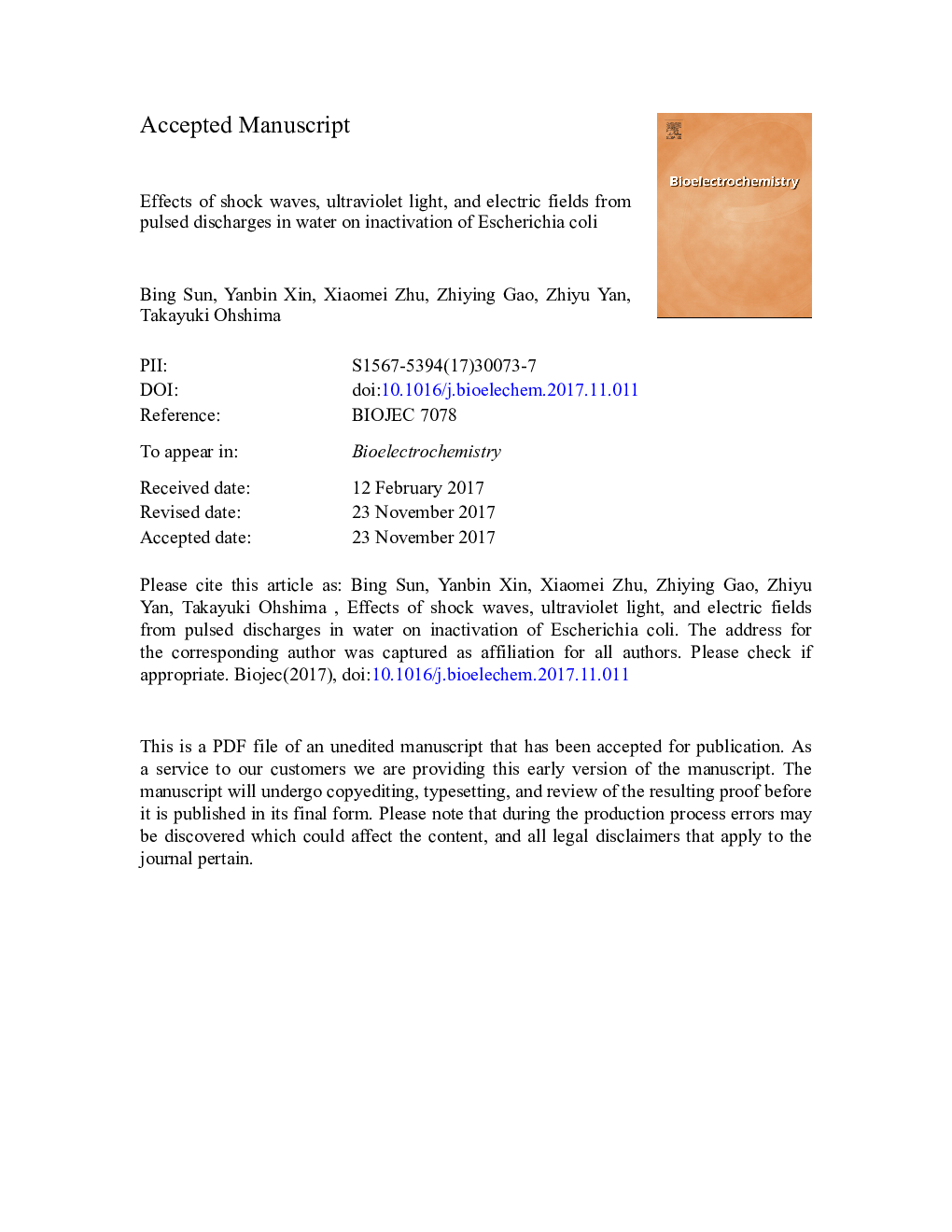| Article ID | Journal | Published Year | Pages | File Type |
|---|---|---|---|---|
| 7704641 | Bioelectrochemistry | 2018 | 18 Pages |
Abstract
In this work, the bacterial inactivation effects of shock waves, ultraviolet (UV) light, and electric field produced by high-voltage pulsed discharge in liquid with needle-plate configurations were studied. The contributions of each effect on the bacterial killing ratio in the discharge process were obtained individually by modifying reactor type and usage of glass, quartz, and black balloons. The results showed that the location from the discharge center axis significantly influenced the effects of shock waves and electric fields, although the effect of UV light was not affected by the location in the reactor. The effects of shock waves and electric fields were improved by decreasing the distance from the discharge center axis. Under this experimental condition, the effects of shock waves, UV light, and electric fields produced by discharges on bacterial inactivation were approximately 36.1%, 30.8%, 12.7%, respectively. Other contributions seemed to be due to activated species.
Related Topics
Physical Sciences and Engineering
Chemistry
Electrochemistry
Authors
Bing Sun, Yanbin Xin, Xiaomei Zhu, Zhiying Gao, Zhiyu Yan, Takayuki Ohshima,
